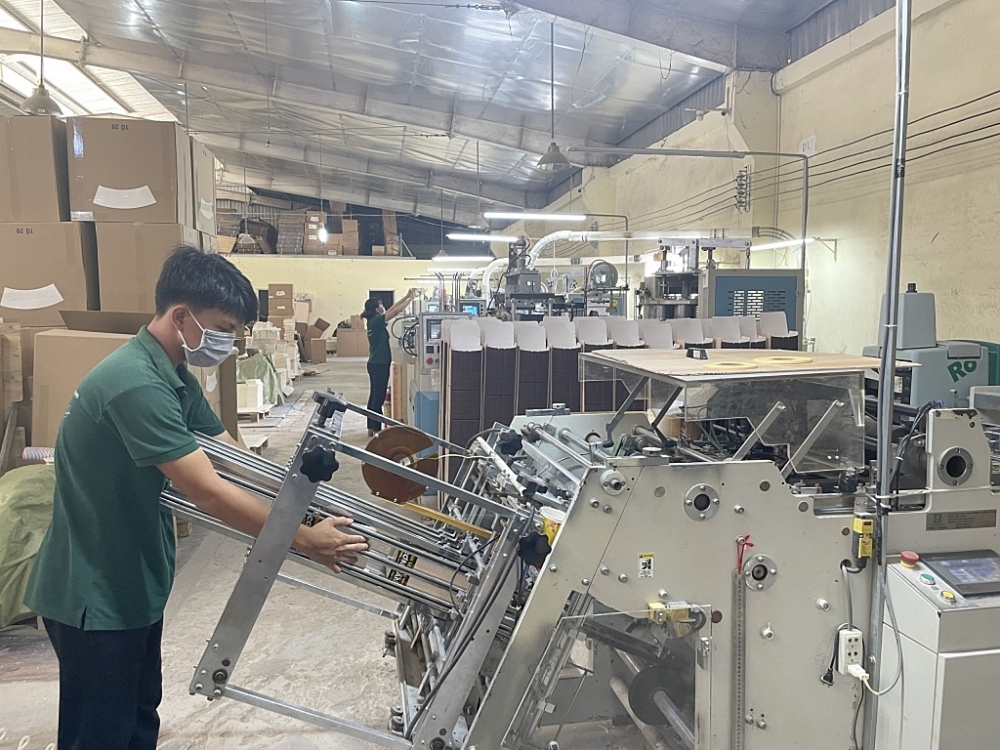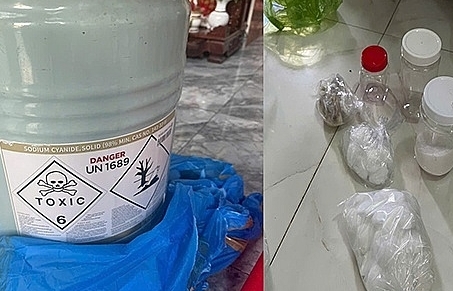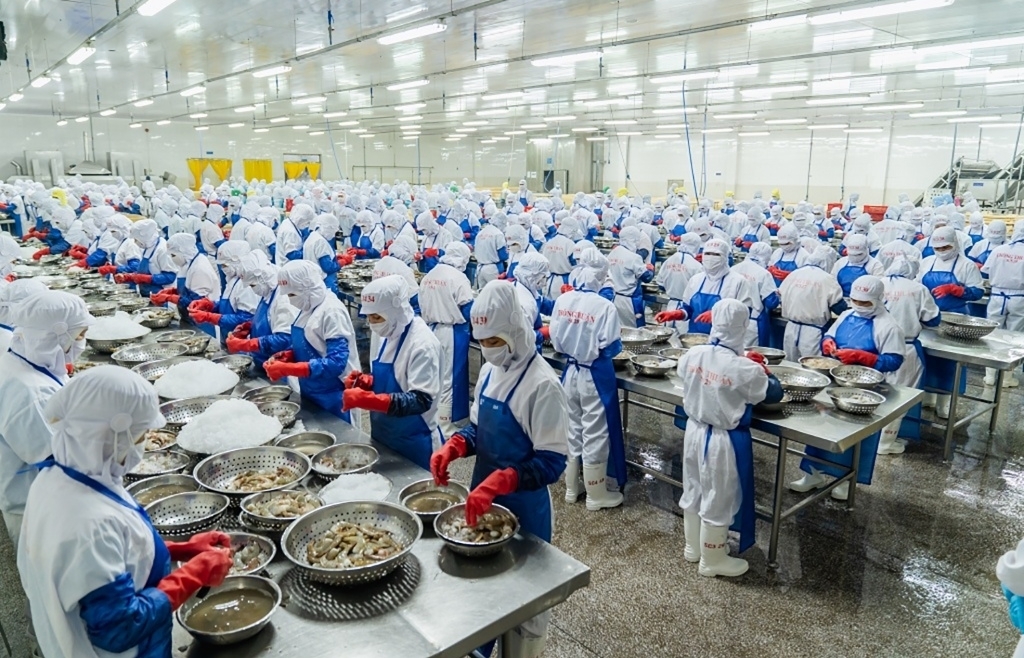Ho Chi Minh City supports businesses in the value-added industry sector
| Preventing refund fraud of value-added tax | |
| The implementation of anti-fraud of value-added tax refund for cassava exports in accordance with the law |
 |
| The production activities at Phuc Thinh Packaging Company Limited. Photo by T.D. |
Multiple difficulties and challenges
According to the Ho Chi Minh City Institute for Development Research, during the period of 2011-2015, the industrial sector in Ho Chi Minh City (HCMC) experienced an average annual growth rate of 5.87%, while the national industrial sector grew at an average rate of 7.39%.
In the period of 2016-2021, HCMC's industrial sector had a growth rate of 2.67% per year, compared to the national industrial sector's growth rate of 6.8% per year.
Overall, from 2011 to 2021, the industrial sector in the city only grew by 4.11%, while the national industrial sector grew at an average rate of 7.07% per year.
Particularly in 2021, the industrial sector of HCMC experienced a significant decline, while the national sector grew at a rate of 4.47% per year.
In the first quarter of 2023, the traditional industrial sectors within HCMC's light industry (including consumer goods manufacturing) recorded an 18.1% decrease. Specifically, the textile industry decreased by 2.8%, the leather and related products industry decreased by 19.4%, and garment production decreased by 21.9%.
Regarding consumption, in the first quarter of 2023, the processing and manufacturing industry decreased by 6.4% compared to the same period in 2022.
The heavy industry sector experienced a significant decline of around 38-39%, including industrial processing and manufacturing products, precast metal products, motor vehicles, with a decrease of 30-32% in metal production and other non-metallic mineral products.
Decreased consumption led to a 4% increase in inventory for both heavy and light industries as of March 2023. Specifically, there was a 75.4% increase in inventory in the production of beds, cabinets, tables, and chairs, and a 34-40% increase in inventory for clothing production, cigarettes, chemicals, machinery, and equipment.
According to a report by the Ho Chi Minh City Department of Industry and Trade, the city's industrial sector showed positive signs of recovery in April, with industrial production index increasing by 3% compared to March and over 8% compared to the same period in 2022.
The four key industrial sectors (pharmaceuticals-rubber-plastics; processing of agricultural, food, and beverage products; mechanical engineering; and electronics manufacturing) continued to play a leading role in driving the growth of the entire industrial sector in HCMC. The industrial production index for these four key sectors in the first four months of 2023 is estimated to increase by 4.3% compared to the same period in 2022.
Despite these positive signals, industry experts in HCMC are facing a series of challenges such as a decreasing contribution to the national industrial sector, low value-added production, and the need to focus on scientific and technological research and innovation in industrial production alongside restructuring the sector in order to develop the industrial sector in HCMC.
Transformation for value enhancement
According to experts, the identified causes of challenges and difficulties in the investment and business environment are still numerous: shortcomings in the investment and business environment, slow industrial restructuring, and dispersed industrial distribution without fully exploiting the city's competitive advantages.
In addition, Mr. Truong Minh Huy Vu, Deputy Head of the Institute for Research and Development of Ho Chi Minh City, stated that limitations in resources, particularly land resources for attracting large-scale investment projects, have affected the development of the city's industry.
The research results of the institute indicate that Ho Chi Minh City faces significant challenges in land funds for industrial development. The available land area for industrial development is still low, and some planned industrial parks are difficult to implement and are being proposed for removal from the plan. At the same time, there is a recommendation to supplement new industrial parks to ensure the planned land area.
HCM City should cease support mechanisms for old industries that lack development potential and fail to undergo a transformation in preparation for the Fourth Industrial Revolution. Instead, it should increase support levels for industries that have effectively demonstrated their transformation progress.
According to Mr. Truong Thanh Hoai, Director of the Industrial Department (Ministry of Industry and Trade), shared at the recent international conference "Orientation for Industrial Development in Ho Chi Minh City by 2030, with a Vision to 2050," Ho Chi Minh City needs to continue improving the investment and business environment, enhancing the provincial competitiveness index, creating a favorable, stable, transparent investment, production, and business environment for the industry. It is essential to promote the digitalization of administrative procedures, and improve the effectiveness of provincial-level governance and administration (PAPI index).
Regarding investment attraction, there should be a focus on both investors and industrial production sectors. Priority should be given to high-tech industries, industries applying high technology, projects with high value-added and significant spillover effects.
Simultaneously, there should be a strong push for industrial restructuring, adopting a growth model that emphasizes the application of science and technology, innovation, and digital transformation, fully exploiting the opportunities of the Fourth Industrial Revolution and the advantages of the city.
To restore and promote the development of Ho Chi Minh City's industry to a higher level, Mr. Bui Ta Hoang Vu, Director of the Department of Industry and Trade of Ho Chi Minh City, stated that there will be greater support for this sector.
Specifically, Ho Chi Minh City will support manufacturing enterprises in finding supply sources through cooperation between the city and provinces, particularly in connecting banks with businesses.
According to Mr. Vu, in addition to the lack of orders, Vietnam's textile and garment industry is facing challenges as major export markets such as the United States, the European Union, Japan, and South Korea have introduced regulations related to environmentally friendly production processes (green production). In this context, looking at Bangladesh's textile and garment industry, it is still developing because the country has shifted to green production.
This requires Vietnam's textile and garment industry to take immediate action and strengthen production and export in the green direction through collaboration.
Firstly, to support production and stimulate consumer demand, the Department of Industry and Trade of Ho Chi Minh City will launch a concentrated promotion program aimed at making Ho Chi Minh City a shopping hub with attractiveness to tourists and residents. The goal is to change the structure of people's shopping baskets to not only include essential goods but also higher-value products.
To maintain the competitiveness of domestic retail goods and enhance their value, the city will focus on improving the quality and value of products. While focusing on developing light industry, the city also recognizes the crucial role of heavy industry and renewable energy technology, aiming to create a sustainable production-consumption cycle.
Related News

HCMC: Domestic revenue rises, revenue from import-export activities begins to increase
09:36 | 16/11/2024 Finance

Establish nearly 170 bogus enterprises to purchase illegal invoice
14:07 | 22/10/2024 Anti-Smuggling

Ho Chi Minh City: Enterprises have abundant export orders
07:41 | 16/10/2024 Import-Export

Ho Chi Minh City: Tightening management of trading of toxic chemicals
10:08 | 13/10/2024 Anti-Smuggling
Latest News

VN's food processing industry struggles to improve quality and value chain integration
15:53 | 22/11/2024 Import-Export

Approach strategy of the seafood industry when implementing UKVFTA
09:26 | 22/11/2024 Import-Export

Mid-November: Vietnam's trade volume matches 2023 total, eyes record-breaking growth
09:25 | 22/11/2024 Import-Export

Vietnamese enterprises facing challenges from cross-border e-commerce platforms
14:32 | 21/11/2024 Import-Export
More News

Vietnam, Malaysia eye new milestone in trade ties
14:29 | 21/11/2024 Import-Export
Shrimp exports surge in 10 months, generating 3.2 billion USD
14:27 | 21/11/2024 Import-Export

Vietnam’s exports to the U.S. near US$100 billion milestone
09:46 | 21/11/2024 Import-Export

From the “abnormal” coffee price, worries about the new crop
09:46 | 21/11/2024 Import-Export

What obstacles limit the market share of Vietnamese goods in the UK?
14:49 | 20/11/2024 Import-Export

Why seafood exports to some Middle Eastern Countries are stalled
14:47 | 20/11/2024 Import-Export

Storm No. 3 destroys profits of many insurance companies
14:45 | 20/11/2024 Import-Export

Vietnam, Malaysia eye golden partnership opportunities in Halal industry
14:44 | 20/11/2024 Import-Export

Tra fish sector aiming for production, processing greening for sustainable development
14:41 | 20/11/2024 Import-Export
Your care

VN's food processing industry struggles to improve quality and value chain integration
15:53 | 22/11/2024 Import-Export

Approach strategy of the seafood industry when implementing UKVFTA
09:26 | 22/11/2024 Import-Export

Mid-November: Vietnam's trade volume matches 2023 total, eyes record-breaking growth
09:25 | 22/11/2024 Import-Export

Vietnamese enterprises facing challenges from cross-border e-commerce platforms
14:32 | 21/11/2024 Import-Export

Vietnam, Malaysia eye new milestone in trade ties
14:29 | 21/11/2024 Import-Export





